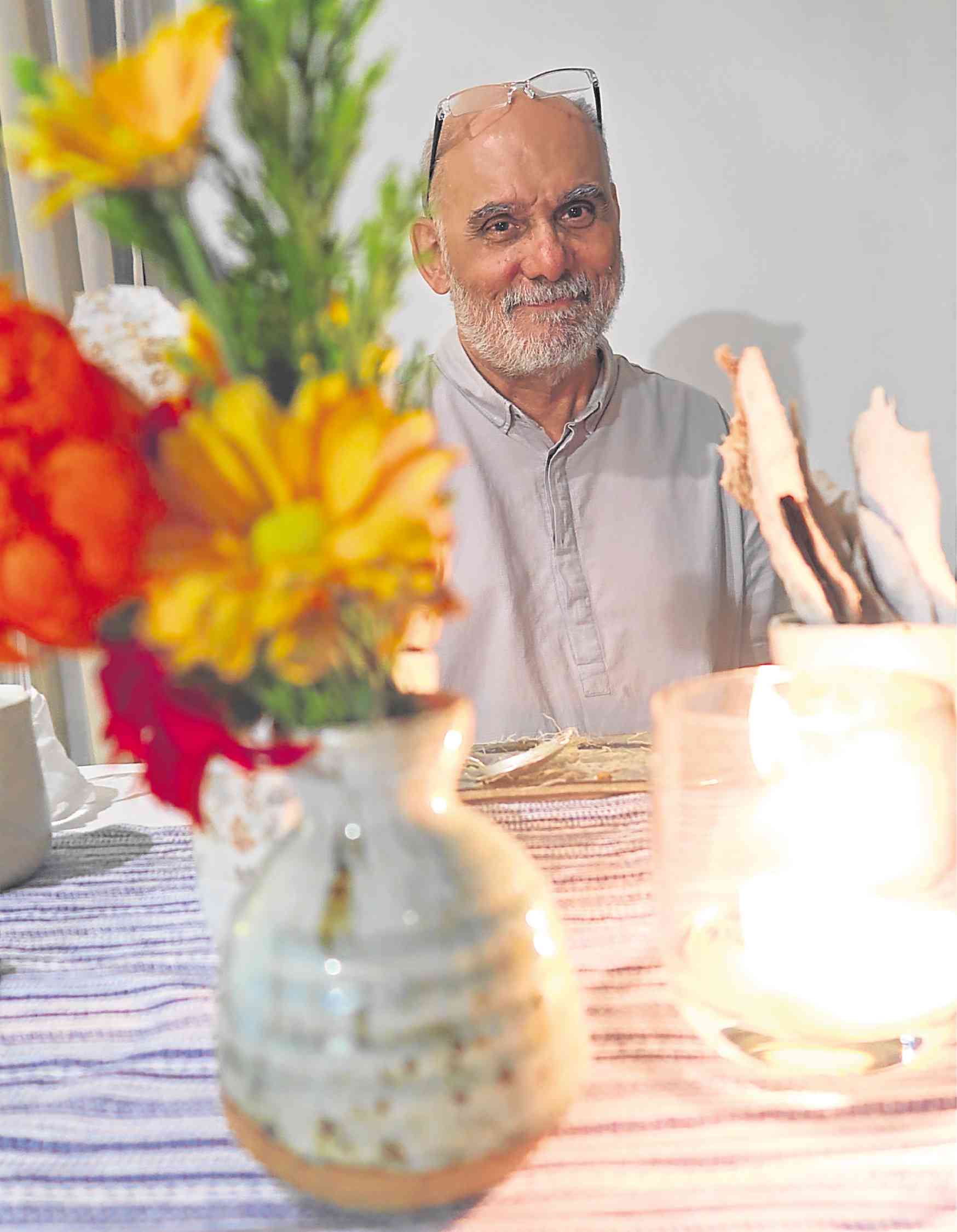I had the great luck of joining a unique dinner organized by potters a couple of weeks ago.
Titled Les Plats Sompteux, the concept was for guests to experience the work of six ceramic artists by having it used at the dinner.
Guests had the privilege of eating food served on stoneware by masters Jon Pettyjohn and wife Tessy, Joey de Castro, Pablo Capati III, Johann Gohoc and Aleth Ocampo. The food was prepared by stoneware artist Aleth at her private dining space in Makati. (What some don’t know is that while Aleth does a lot of private dining and makes to-die-for chocolate chip cookies under the label Aleth’s Kitchen, she is herself now quite the distinguished potter. You can find her works at Aphro Living.)
Pottery talk
“What is terracotta?” I asked those seated beside me, all of whom I met for the first time. “It’s a kind of clay. But there are many kinds of clays,” Jon, who was across me, explained.
“It’s the dirtiest of the clays,” Joey chimed in.
I asked about terracotta because I had just met another artist in the kitchen, Joe Geraldo, who was just there to hang out. He explained he worked more with sculpture (rather than functional art) but uses terracotta.
“This reminds me,” I told Jon, “of this article I just read in the Economist about a museum curator named Zhao Kangmin of the Lintong District Museum in a small province in China. There were farmers nearby who found pieces of these great terracotta sculptures of soldiers …”
From China the country, our conversation shifted to china the stoneware. Back in the day, this was only found in China, from a province so blessed that the clay was white. They created a technique using heat that was so intense it turned this clay, already special to begin with because it was white, into porcelain. Since this was only available in China, it was called china.
Then I went on to inquire from the potters … so what is bone china? Bone china is England’s response to China’s china. After all, they need fancy ware for their tea. They wanted to replicate china but they couldn’t because the United Kingdom was not blessed with that kind of clay.
After much experimentation, the brilliant Brits found a way. They discovered that if you mix bone—as in cow bone—with certain kinds of clay, you can create something that resembles the color of china. Hence, bone china. It is literally made with animal bones.
Barcelona
Jon actually learned to make pottery in Barcelona. After saying that I saw some of the pottery of Pablo Picasso at the Picasso museum in Barcelona, Jon suddenly remembered his youth.
He lived in Barcelona in the 70s. He moved there when he was 22 (he is half Filipino, by the way—mom’s a Lorenzo—although his dad’s surname is very American, Pettyjohn).
His cousin told him to check out Barrio Gotico, the gothic district. While walking around, he discovered an art school with students doing pottery. He had a eureka moment and found his calling to become a potter. He got really into it and stayed in Barcelona for two years, studying the craft.
He came back to the Philippines to pursue his passion further. He went to the Bureau of Mines to find out where to find clay (he ended up going all the way to Albay). And now Pettyjohn is a Philippine pottery institution, one of the pioneers and still leading the industry after more than 40 years.
Aleth’s Kitchen
The idea to have a dinner using stoneware art was actually Jon’s idea. A Japanese potter friend did something similar in Japan. It was not until they met Aleth, though, that the idea came to life.
“Chefs and potters working together … doesn’t get any better than that,” Jon said.
Aleth’s food was a hit, of course. Her homemade breads were sliced and served on Tessy’s long ribbed tray.
The excellent mushroom soup using four kinds of mushroom, punctuated with truffle sauce, butter and cream, was served in bowls by Johann.
The beef bourguignon, which Aleth has mastered, was served in bowls by Pablo, Aleth’s sensei. Pablo established the Capati Pottery Studio in San Jose, Batangas, in 2000 where he built the second Anagama Kiln in the Philippines. He is known for using the technique of making beautiful surface effects on stoneware.
Tessy, meanwhile, puts intricate touches on her creations, like thoughtfully designed edges on a plate.
Kunafa, a Turkish dessert of shredded filo pastry stuffed with kefalograviera cheese, was served in stoneware by Joey.
Best of all, guests went home with their chosen pottery used or displayed at the dinner. And as we all went home, happy with our stoneware, the big question on everyone’s minds was: When is the next one? Hopefully soon!
Check out more of their works:
For the works of Jon and Tessy Pettyjohn, visit https://www.facebook.com/pettyjohnpottery/. For the works of Joey de Castro, visit https://www.facebook.com/joeydecastropottery/. His gallery is at Sierra Madre Pottery Studio. 586 Sierra Madre St., Brgy. Malamig, Mandaluyong City.
For private dining at Aleth’s Kitchen, call +63 2 851 0180 or search Aleth’s Kitchen on Facebook.
